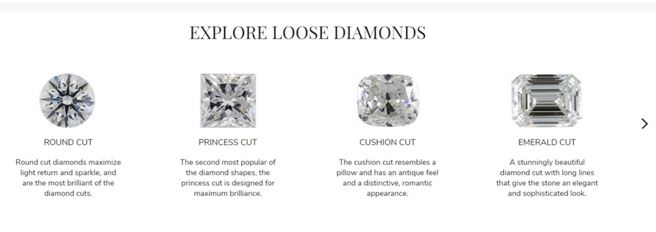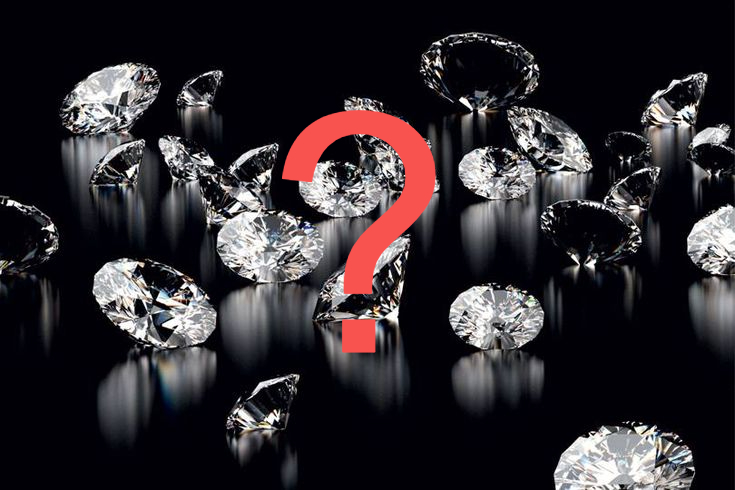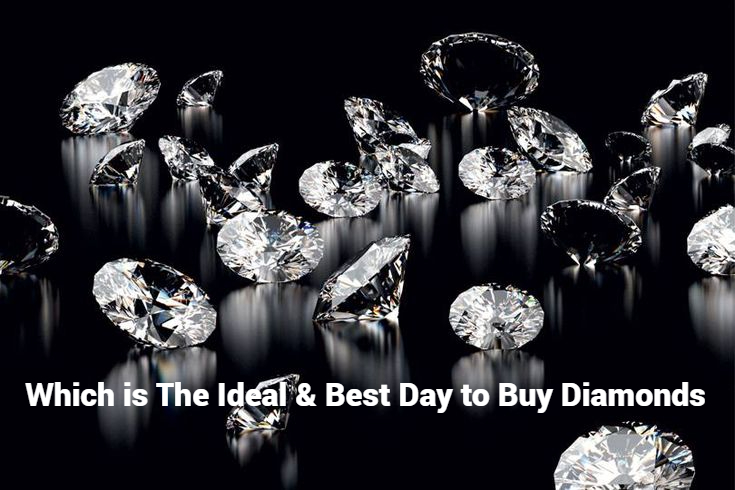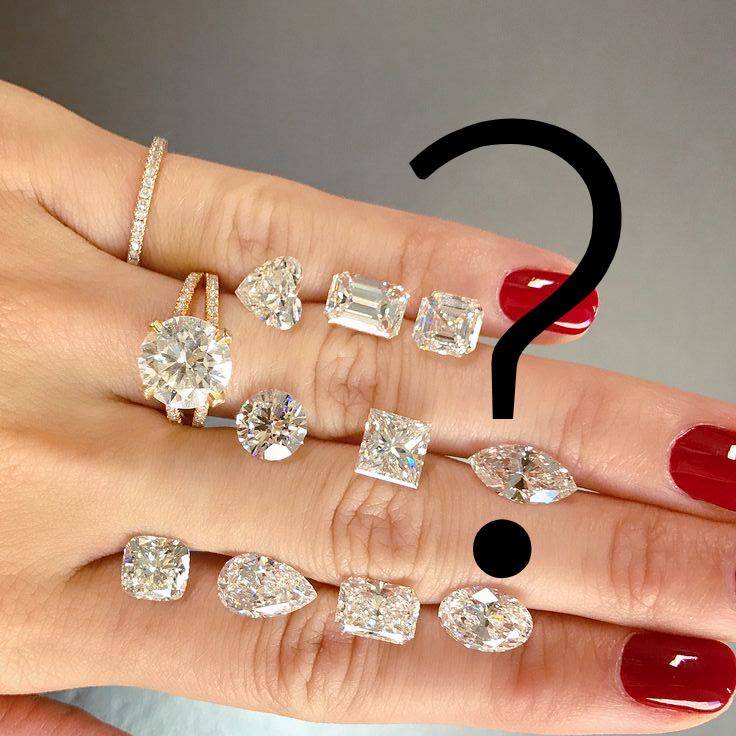You might think of this as a debate in which you get to pick the winner.
You know why?
Because you get to pick the diamond you want. Just make sure you see both sides.
Sometimes, potential buyers get confused over which is the best type of diamond cut to go for and some of them reach out to diamond sellers to give them the best advice or help them select.
It is understandable when you have two great cuts sitting before you such as the round and the oval and you need to make a choice.
This article would, therefore, explore the strengths and weaknesses of the round and oval cuts, examining how they measure up against each other. At the end of this article, you would be able to appreciate the qualities of each cut and make a decision depending on which best suits your purpose.
We would be comparing these two diamond cuts along the lines of:
- CUT:
- Round cut diamonds have more sparkle and brilliance than oval cuts
- Round cut diamonds are more technical and require more skill to cut, although the oval cut has its own peculiarities.
- Oval cut diamonds conserve more rough diamond during the cutting process
- Oval cuts suffer from the bow-tie effect
- Oval cuts have weak points where they are prone to breakage.
- COLOR
- The oval cut shows more color around the edges than the round cut
- The round cut masks color better
- CARAT
- The oval cut is as much as 10% bigger than its corresponding round cut
- The oval cut gives more value for money in terms of size
- Oval cut diamonds maximize rough diamond better
- PRICE:
- Round cuts are more expensive than oval cuts because:
- They are more in demand
- They waste more rough diamond
- You can save as much as 30% if you buy an oval cut instead of a round cut
- Round cuts are more expensive than oval cuts because:
- POPULARITY:
- Round cut diamonds are more popular
- Round cut diamonds are more in demand
- Round cut diamonds are deemed to be in vogue
- Round cut diamonds are easily available and accessible for purchase
- Oval cut diamonds stand you out, they are not seen everywhere, unlike the round cut
- GRADING:
- Many grading systems use the round cut as a standard, therefore, it has more details and analysis carried out.
- The round cut’s grading system is more reliable and can be used for other types of cuts.
- VARIETY:
- Round Cuts have little room for variation
- Oval cut diamonds have more room for variation They can come:
- Rounder, wider and squatter or
- Slim, slender and narrow
1. CUT:
As we know it, refers to the interaction of the diamond with light. It is a very important characteristic of the diamond and it is important we examine how each of these cuts measures up in terms of cut.
ROUND: The round cut is a brilliant cut. Actually, it is the icon of brilliance in the diamond world – When Rihanna sang ‘shine bright like a diamond,’ I am so sure it was a round cut diamond she was referring to!
It is cut with 58 symmetrical facets and this ensures that it reflects light incredibly well. It, therefore, has more fire and scintillation than any other cut.
However, the round cut can be very difficult to cut and requires very high craftsmanship to get an excellent cut grade. When this cut is not perfect, the scintillation and fire of the diamond are affected. During the cut process, there is also a lot of rough diamond wastage, which would affect other factors like the price as we would see later. The round cut also has a more durable cut than the oval-shaped diamond. It also has lesser points of weakness than the oval cut.
OVAL: The oval cut is also a brilliant cut that reflects light well. However, it does not reflect light as good as the round cut. It has fire and scintillation too, but this is not as prominent as the round cut. This is because of the unequal distribution of light within the diamond. This also results in the bowtie effect, which is present in almost all of the oval diamonds. The presence of bowties can significantly reduce the brightness and sparkle of the oval diamond.
Furthermore, there is some technicality in cutting the oval shapes. Diamond cutters might cut the curves too straight which would make the diamond look flat and diminish the appeal.
Unlike the round shaped diamond, the oval-shaped diamond conserves more diamond in the cutting process. This would be an advantage for the price as we would see later in this article.
Based on the cut, the oval-shaped diamond is also prone to breaking at the points. This reduces the durability of this cut as compared to the round cut diamond
2. COLOR:
This would also affect the visual appeal of the diamond. So how does each of them measure up?
ROUND: When it comes to color, the round diamond does a better job of masking or hiding color, generally speaking. There is no area where the colors are usually highly concentrated.
OVAL: Oval diamonds would show more color than their corresponding round shapes. This is because of the oval shape which would retain more color at the points. Therefore, you would have to go for a higher color grade to prevent the edges from being colored.
3. CARAT:
refers to the weight and then extending to the size of the diamond.
Which is better here?
ROUND: The diamond shape is fairly big in size, but as was stated earlier, there is more wastage during the cut process, which affects its relative size. It looks smaller than its oval counterpart
OVAL: This is a major advantage of the oval over the round. The oval cut conserves more rough diamond and this reflects in the size. An oval-shaped diamond would look bigger than its round cut counterpart. This means you can get more value for your money in terms of size because when set in rings, it would always look bigger and more prominent. It is in fact estimated that an oval cut diamond would look about 10% bigger than a round cut of the same weight.
4. PRICE
ROUND: The round cut diamond wastes more diamond and so, the price is higher. The fact that they are also more in demand means that their prices would move up. (About 75% of the diamond demand today is for round cut diamonds!) It is therefore expected that they would be more expensive relative to an oval shape.
OVAL: The oval shape is not as highly demanded as the round cut, therefore, it is cheaper. The oval shape also maximizes more rough diamond and this contributes to a lower price. You can, in fact, get an oval shape for as much as 30% lesser than a round cut shape. The oval shape, therefore, makes a great deal if you want to cut down on your budget and still get a great diamond cut.
5. POPULARITY:
Even though both the round and oval cuts have been worn by different celebrities in the past and present, the round cut still holds the record for the most popular and in demand. Therefore, if you are looking for a diamond that is in vogue, then the round cut is the one you are looking for. It has been around for several decades and is still the most popular.
Again, the round cut diamond is easy to get since it is everywhere. 75% of all existing diamonds? You would agree with me that It is readily available.
The case is not the same for oval-shaped diamonds. Getting them would, therefore, be more challenging.
However, on the flip side, if you are someone who likes to stand out, the oval cut might do it for you as it is not won by every ‘Dick and Harry’.
Well, if you those are your names, I hope you have a round diamond!
6. GRADING:
The round cut diamond is the GIA standard. The grading system was developed using the round cut and as a result, there is much more clarity and reliability as regards the grading of the round cut. This also means there is more information on what to look out for in the round cut diamond in analysis and examination.
For the oval shape, there is also a grading system, for the fancy cuts, but it is not as detailed or common as the round cut. Of course, this is to be expected since the round cuts are more popular!
7. VARIETY:
The round cut is the round cut. You cannot do anything about it. It is just the way it is. The implication is that there is really no variation in style and shape for the round cut. The best you can get is variation in size which is not much of a big deal
However, with the oval cut, there are a variety of shapes and styles which are done while cutting. You can have an oval cut that is slender, thin and long, which would make the finger of the wearer appear longer when worn. The oval cut can also be designed in such a way that it looks wider and squatter which would appear similar to a round diamond. There are also variations that can be used in between.
Therefore, if you love varieties, you love the oval cut diamond!
Now that we have compared these two great diamond cuts, you would agree that they have their pros and cons. You should decide what you want as the decision would be largely based on preference.
Make sure whatever you pick suits what it is needed for and that you are also happy with it.



